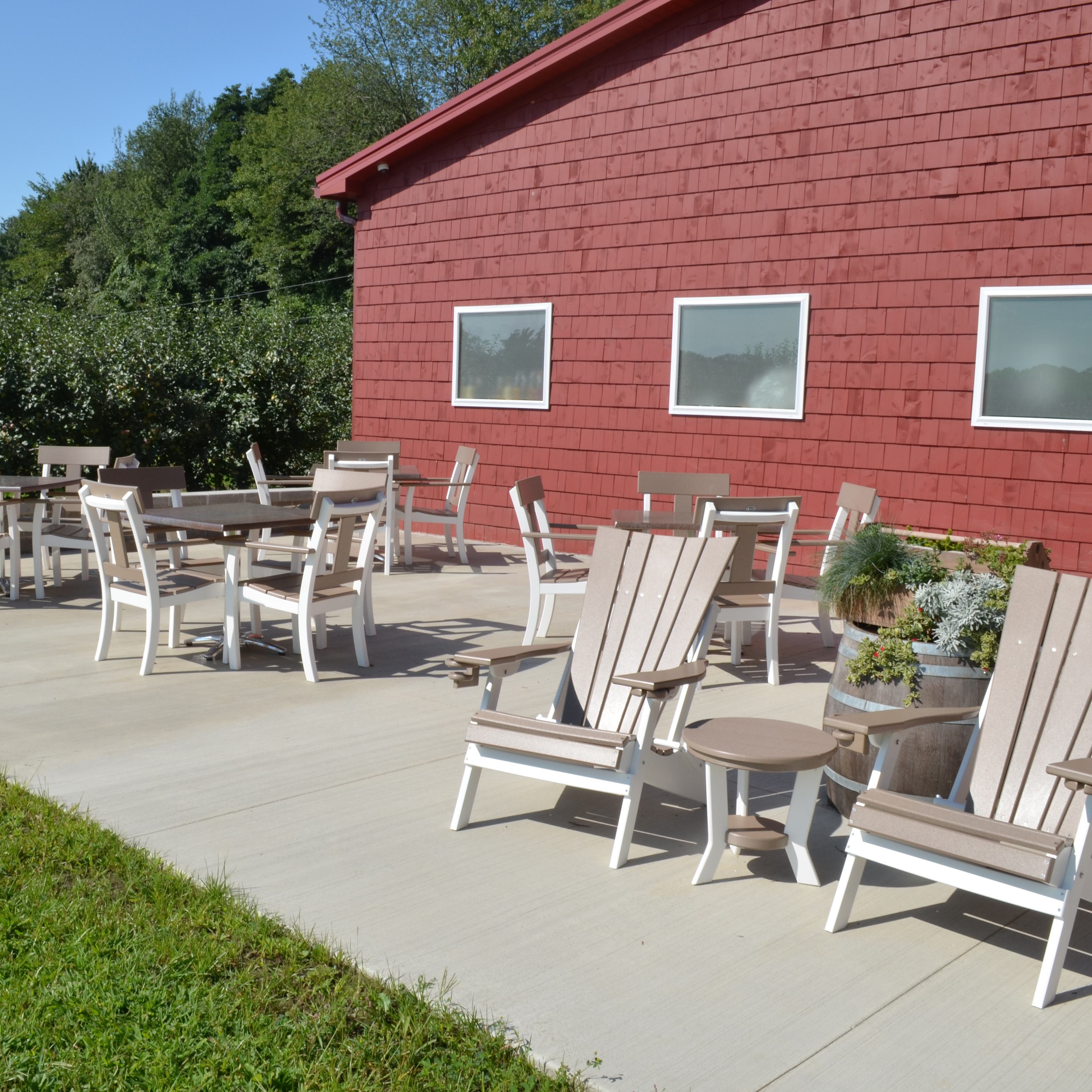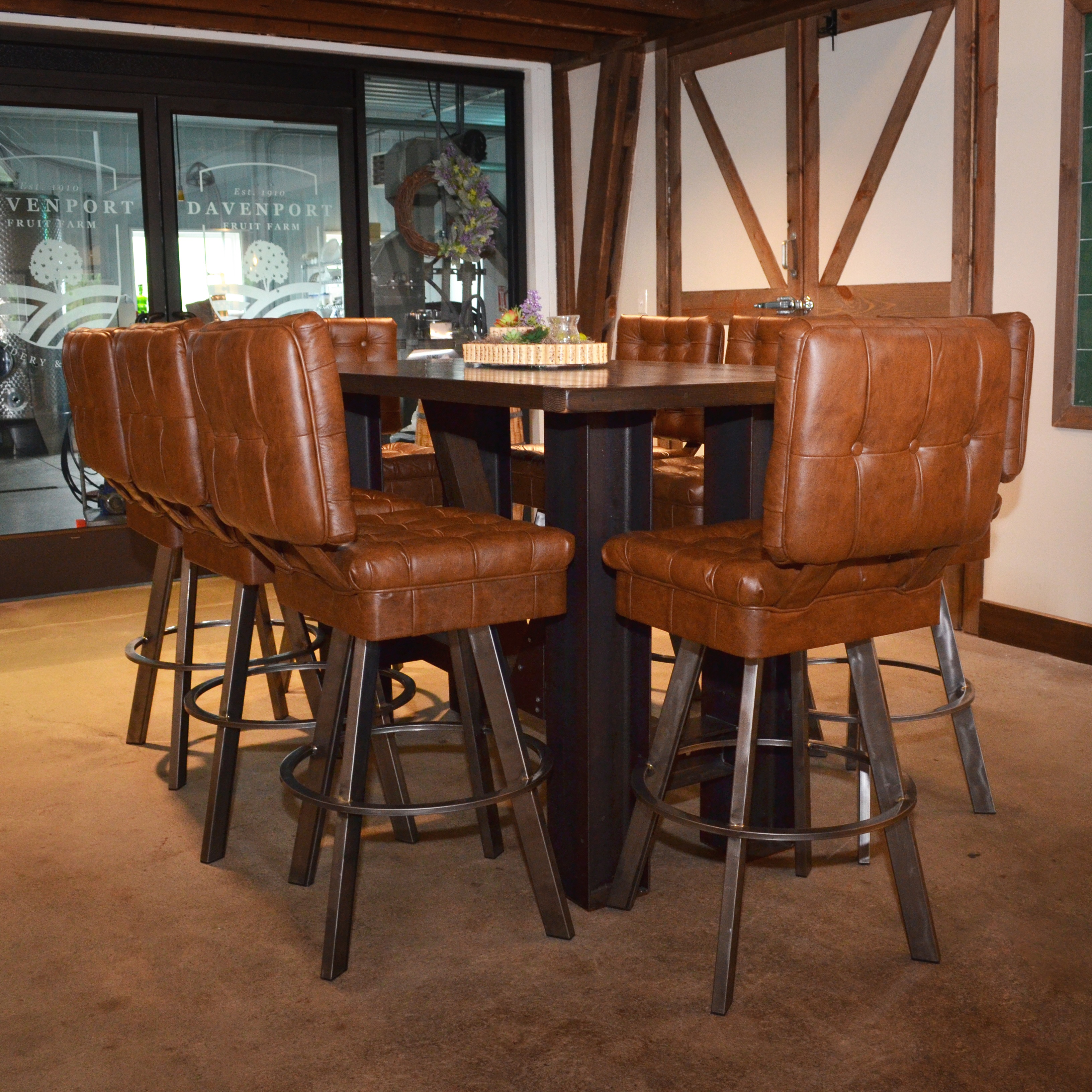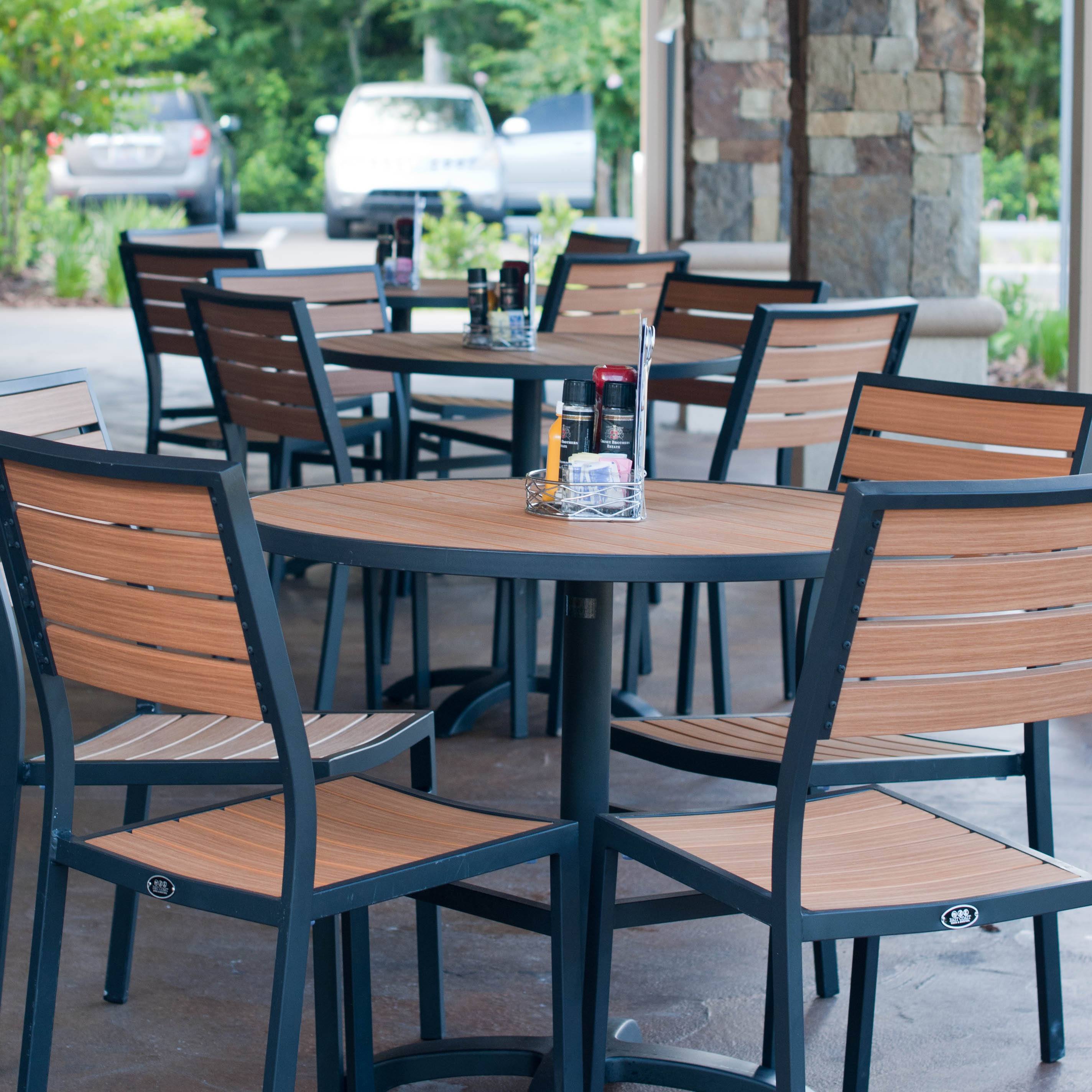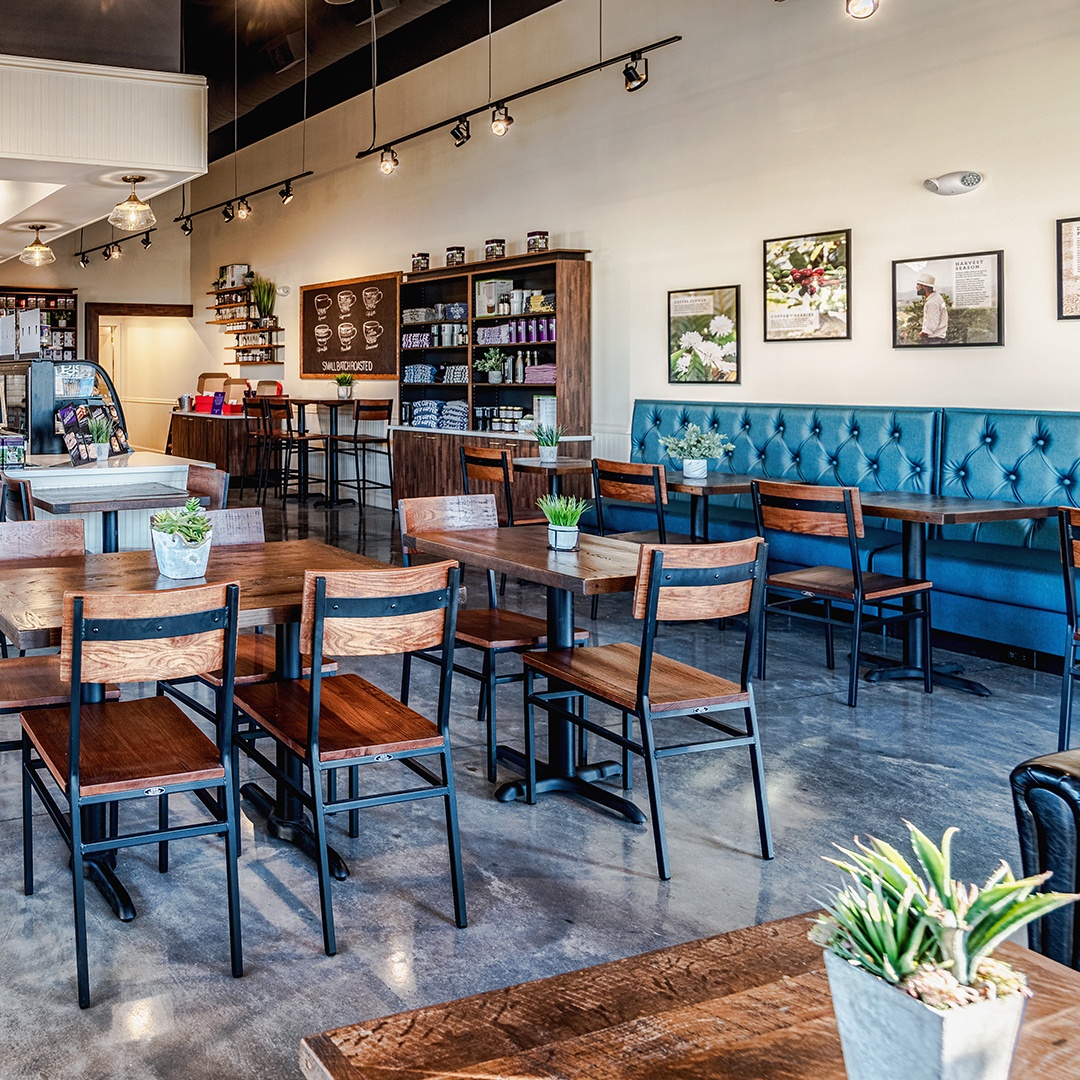If you’ve been in the restaurant business for any length of time, you know how much wear and tear your furniture has to undergo. The constant rearranging, pulling out and scootching in of chairs, and daily spills can turn your shiny new furniture into dingy old furniture in a flash.
You can’t run around all day cleaning up messes and babying your equipment. So you have to empower your staff to be the protectors of your furniture.
Provide the right tools
If you want your staff to take care of your furniture, they need the right tools.
You know the enemy of wood furniture is moisture. So to help keep it at bay, invest in coasters. Make sure that you keep a steady supply so you’ll never run out.
Train your staff to drop coasters at every table before drinks are even ordered as part of their standard greeting. Servers and bartenders should introduce themselves and welcome guests to the restaurant, all while setting the table or bar with coasters for the drinks to come. That way they won’t be trying to place coasters with one hand while holding a tray of drinks in the other.
Next, make sure servers are able to wipe up any spills right away by including a small towel as part of their daily uniform. It will increase your linen budget slightly to have enough towels for every server to keep one on them at all times. But by wiping up spills immediately without having to hunt for a towel, your staff will help to increase your tables’ longevity.
You also want to protect your tabletops from excess heat. If you have any dishes that are served in cast iron or stainless vessels, they can get very hot, and can scorch your table. Make sure that any metal vessels that may go straight from the oven to the table are served on a wooden plank or a small plate to protect the finish.
Finally, you’ll want to provide the right cleaners for your furniture. The common “bar towels” often leave a lot of lint behind. Instead, use microfiber cloths that will pick up dust and crumbs, leaving a clean finish. For a cleaning solution, make sure to use something gentle. If it needs to be diluted, list the ratios on a laminated sheet at the host stand or in the server station where staff can always find it.
Include maintenance in closing sidework
Taking care of their section should always be a part of a server’s closing sidework. Don’t leave the cleaning of tables and chairs for the opening team the next day, as that will leave sticky messes time to damage your furniture finishes.
Servers should give the tables and chairs a thorough wipe down with a diluted soap and water mixture, followed by another wipe with a clean damp cloth. Make sure to avoid any oil-based cleaners for vinyl booths or seats, as it can harden the vinyl. And for lacquered or varnished wood furniture, train staff to wring out their cloth well before using. It should be damp, not sopping! Avoid cleaners with alcohol, silicone, or ammonia, as they can damage the lacquer.
Servers should also check under the tables for gum or anything sticky. It’s gross, but removing gum on a daily basis will prevent it from hardening and sticking to the bottom of the table even worse.
They should also “crumb” any booths in their section, cleaning out the crack between the seat and the booth back. This is where crumbs and grime can collect unseen. If the space between the seat and back is too tight to fit a hand, servers can wrap the handle of a butter knife in a towel, and slide that into the crack. Run the butter knife all the way across the booth to draw any crumbs out.
Bartenders should also wipe down their bar stools, and the host stand should wipe their host station.
After sidework is complete, it should always be checked by a manager or lead server. Make sure the person doing the checkout has a flashlight. Even with the lights turned all the way up, it can be very difficult to see under a table. A flashlight will make it easy to see any spots the server may have missed.
Have a damage log
Communication is always one of the challenges of a restaurant. Unlike an office where employees are generally working the same hours, restaurants have staff working across different shifts and different days, with very little written communication.
So when something is damaged, how will you know?
Create a Standard Operating Procedure to handle maintenance and repair requests. Exactly what this will look like will depend on your restaurant. But here are a few options:
- Have a physical logbook somewhere in the restaurant where anyone, from the dishwasher to the head bartender, can write down items that are damaged or need replacing. By empowering every member of staff to add to the list, it will be less likely that items will be forgotten in a game of telephone.
- Assign one member of staff to be the “maintenance manager”. Ideally, this would be a handy person who could do some minor repairs themselves and outsource the rest. The great thing about this method is that it keeps the minor issues off your plate. But make sure this person has a budget for both their time and for purchases, to keep costs from spiraling out of control.
- Ask staff to bring any repair requests to the MOD, who can then inform the GM or owner. The risk with this method is that by adding steps to the process, you increase the likelihood that someone will forget to pass on the message.
You may come up with something different. But whatever you choose, make sure that everyone in the restaurant knows the procedure.
Your servers who clean their sections will be the first to notice a wobbly table or damaged chair. So they need to know exactly what to do to get it fixed. You don’t want to be in a situation where every server is aware of a problem, but no one has informed management.
Have a deep clean/repair day
On occasion, you may notice that the daily cleanings could stand to be supplemented by a deeper scrub. At times like these, it could make sense to have a full restaurant deep clean. This is a great opportunity to get the whole place spic and span.
The bartenders can pull everything out of the bar and make sure every shelf and wall is sparkling. The servers can do a thorough clean of furniture, restaurant walls, windows, and other surfaces. And the kitchen staff can work on the baked-on grease and grime that inevitably collects in commercial kitchens.
This is also a great time to do minor repairs. For example, wood chair legs are vulnerable to being kicked and damaged, creating gouges in the finish. Those gouges can be filled with wood filler and stained with a stain pen to match the surrounding area. This is a great fix for chair legs since they won’t be examined up close.
You will probably have to close the restaurant for a day to do this, and you’ll have to pay your staff an hourly wage. But if it’s only once or twice per year, it could be worth the extra expense.
Conclusion
Your restaurant furniture was a big financial investment, so take steps to protect it! By adding the care of restaurant furniture into servers’ daily sidework, it will become a quick and routine part of their shift.
And a clean, attractive environment does more than just impress customers. It also fosters a sense of pride in your staff, helping with employee happiness and retention. Now that’s a win-win.







